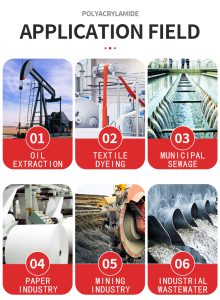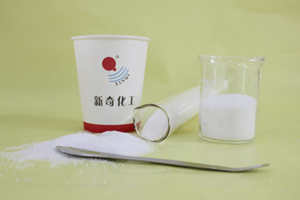PAM is an organic polymer compound, and the molecular weight of most products is more than several million, even close to 20 million. Therefore, its method is very different from the method of dissolving small inorganic molecules by iron and aluminum salt coagulants. The principles are as follows:
1. The polyacrylamide flocculant cannot be directly discharged into the sewage, it needs to be dissolved in water first and then precipitated.
2. The water should be clean water with soluble polymers (such as tap water), and the water temperature is lower than 5°C and dissolves slowly. The water temperature exceeds 40°C and dissolves faster.
3. The concentration ratio of the polymer solution, our suggestion is 0.1% to 0.3%, that is, add 1-3g polymer powder to 1 liter of water. However, if the polymer concentration is too high, the load on the agitator motor will be too large, and the dispersion state of the sewage will not be good, which will affect the use effect.
4. Do not use a centrifugal pump to transfer into the solution, so as to avoid the high-speed rotating blades from shearing and degrading the polymer.
The method is as follows: add a certain amount of water into the container, and calculate the amount and weight of the polymer according to the clear water and the required partial polymer concentration.
Turn on the electric mixer and swirl the water to create a vortex so as not to cause degradation of the polymer, but not so slowly that the polymer particles will float to the surface or sink into the water and form clumps.
Slowly pour the entire polymer into the water, making sure the polymers do not stick to each other. In order to form a uniform, transparent, viscous solution without visible macromolecules, it needs to be stirred for a period of time to fully dissolve the polymer.
Iron ions are the catalyst of PAM, it is best to use stainless steel, plastic, glass fiber to avoid iron ions entering the PAM solution.


